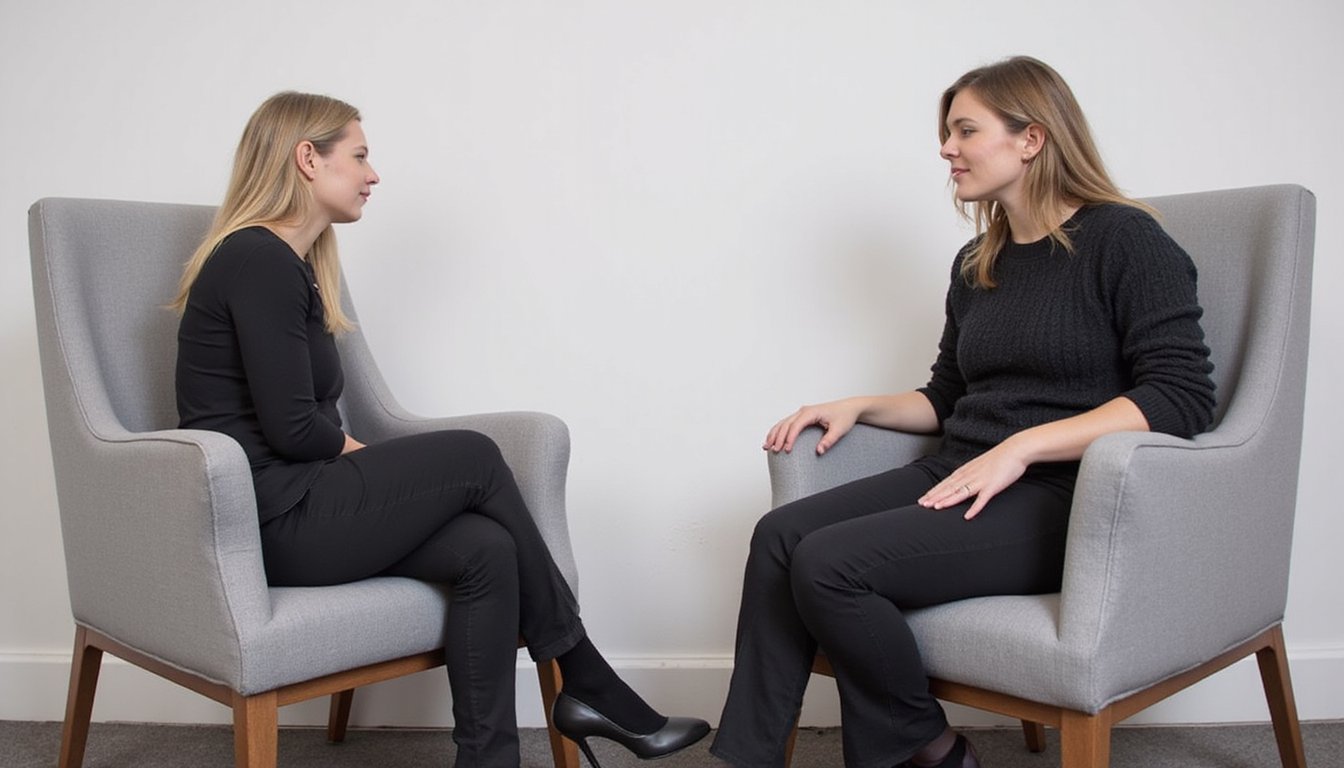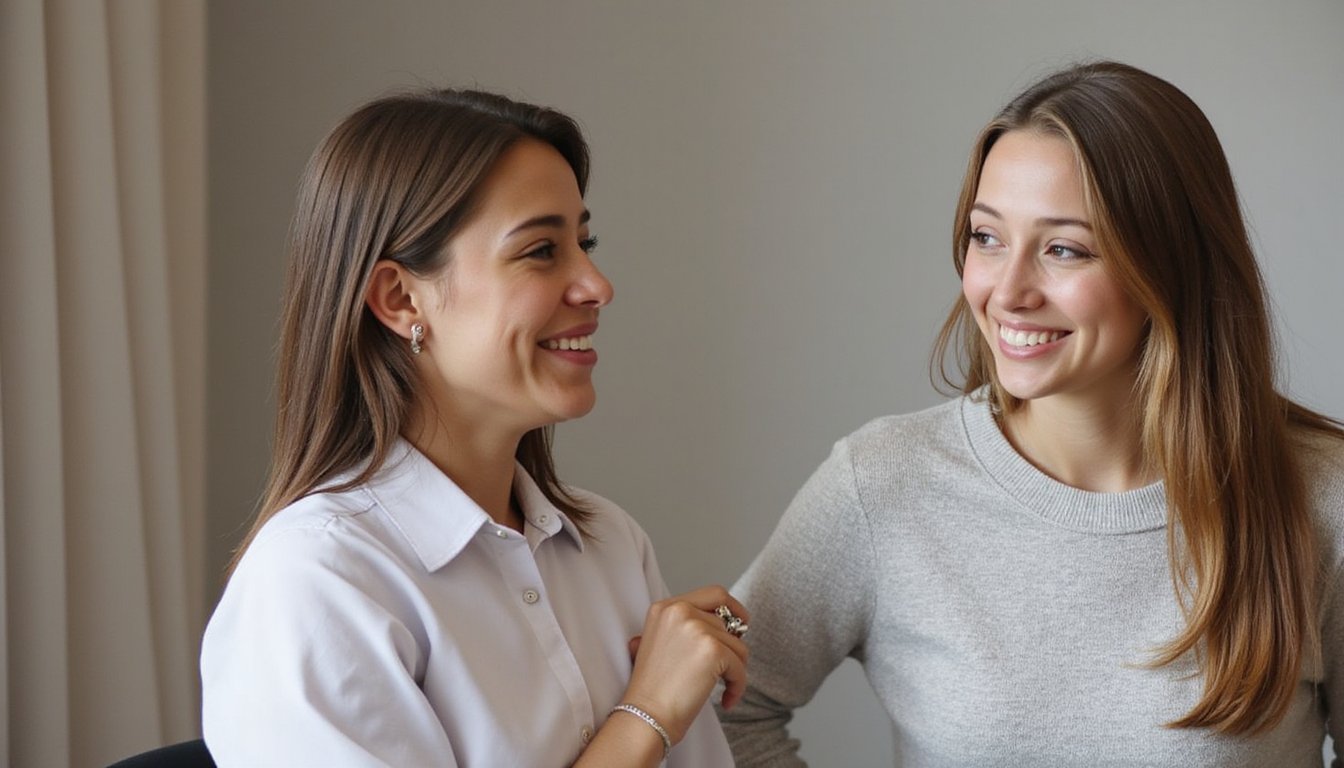Collaborative family therapy transforms your home into a powerful mental health support system by actively engaging all family members in the treatment process. You’ll strengthen communication skills, build trust through active listening, and develop effective conflict resolution strategies together. When your family works as a team, you’ll create lasting positive changes and enhance confidence in managing daily challenges. Regular practice of these therapeutic tools leads to greater resilience and improved outcomes, uncover how these techniques can revolutionize your family’s well-being.
Building Stronger Treatment Outcomes Through Family Collaboration

While traditional therapy approaches often focus on individual treatment, collaborative family therapy has emerged as a powerful framework for achieving superior outcomes across multiple dimensions. When you engage in family-based collaborative interventions, you’ll experience notably higher completion rates and better symptom reduction compared to individual approaches. This approach is particularly effective for treating externalizing behavioral problems like conduct disorder, delinquency, and substance abuse. Recent studies show that utilizing measurement-based care leads to improved patient outcomes and faster treatment times when incorporated into family therapy sessions. Families who maintain stable high collaboration throughout therapy demonstrate significantly greater progress and successful treatment completion.
Fostering Family Empowerment and Self-Efficacy
Through collaborative family therapy, empowerment and self-efficacy become foundational pillars for lasting therapeutic success. When you actively participate in your family’s treatment path, you’ll develop stronger problem-solving skills and confidence in managing daily challenges. By cultivating open communication and participating in goal-setting, you’ll experience greater satisfaction with services and improved outcomes.
Your engagement in collaborative therapy strengthens your ability to advocate for your family’s needs and navigate support systems effectively. You’ll learn to identify and build upon your family’s unique strengths while reinforcing family leadership in decision-making processes. Regular successes and positive feedback create a cycle of growing confidence, helping you feel more capable in supporting your children’s needs and maintaining beneficial routines. Working with professionals as partners in care has been a successful approach in developing countries for over five decades. You’ll also develop resilience and adaptive coping strategies that serve your family well beyond the therapy sessions. Understanding and addressing internal family barriers, such as cultural beliefs or existing mental health challenges, helps create a more effective therapeutic environment.
Enhancing Communication Skills and Conflict Resolution

Practicing active listening within your family creates a foundation of trust and understanding, where each person feels truly heard and valued. You can learn to express difficult emotions constructively using “I” statements and reflective responses, which help prevent misunderstandings and reduce defensive reactions. When conflicts arise, working together to find solutions through collaborative problem-solving strengthens your family bonds and creates lasting positive change. Tools like role-playing and mindful techniques can enhance these communication practices between family members. Establishing shared decision-making in family discussions empowers each member to contribute meaningfully to the therapeutic process. The therapist serves as a collaborative participant rather than an expert, helping guide positive changes while respecting family perspectives.
Active Listening Builds Trust
When families adopt, welcome, or accept active listening, they create a powerful foundation for trust and emotional security within their relationships. Studies show that practicing active listening can increase trust levels by up to 55% while reducing major conflicts by 60%. Research indicates that constructive discussions help families resolve conflicts more effectively than heated arguments. Recent neuroimaging studies reveal that active listener presence triggers reward-related brain responses in those being heard. This approach boosts emotional intelligence and promotes effective conflict de-escalation within the family unit. Open, honest communication in a supportive environment leads to lasting positive changes in how family members interact with each other.
Your family can experience these benefits through consistent active listening practices:
- Create dedicated time for family check-ins to strengthen communication habits
- Practice non-judgmental understanding during disagreements
- Allow each person to express themselves fully without interruption
- Acknowledge emotions and perspectives before problem-solving
Express Emotions With Care
Three key elements define emotional expression in family therapy: clarity, compassion, and constructive timing. When you’re sharing feelings with family members, using “I statements” helps you convey emotions without triggering defensiveness or blame. A helpful format is to express “I feel hurt when specific situations occur,” which promotes accountability rather than accusations. Learning to share emotions this way reduces reactivity between family members during difficult conversations.
Your emotional disclosure becomes more effective when you pair it with expressing empathy for others’ perspectives. Through role-playing and mirroring exercises, you’ll develop deeper understanding of your family members’ emotional experiences. This mutual understanding creates a foundation for healthier communication during conflicts. Dedicated communication sessions with a family therapist facilitating ensure everyone has the opportunity to speak and be heard in a safe environment.
Remember to frame your feelings constructively, focusing on specific situations rather than making broad accusations. When emotions run high, take advantage of structured feedback techniques and emotional check-ins to maintain clarity. This approach helps guarantee your message is received as intended while preserving emotional safety within the family unit.
Solve Problems Together Peacefully
Successful problem-solving in family therapy relies on developing clear communication skills and effective conflict resolution strategies. When you manage emotions constructively and augment cooperative spirit through structured family meetings and active listening, you’ll create a foundation for peaceful conflict resolution.
To solve problems collaboratively, implement these proven techniques:
- Practice reflective responses and paraphrasing to validate concerns and clarify meanings during disagreements
- Use time-outs and cooling-off periods when discussions become heated
- Engage in perspective-shifting exercises to understand each family member’s viewpoint
- Establish regular family check-ins to address challenges before they escalate
Managing Multiple Family Challenges Together

Since families rarely face challenges in isolation, collaborative family therapy offers a thorough approach to addressing multiple issues simultaneously. Through setting shared family goals and working together, you’ll find that managing multiple challenges becomes more achievable and sustainable. Research shows that families who maintain high collaboration experience significant improvements in both symptom reduction and improved family functioning. Safe and supportive environments within family therapy sessions enable open dialogue and emotional expression between members.
You’ll benefit most from this approach through home-based therapy sessions, which offer 35% higher engagement rates than clinic visits. When you work collaboratively to tackle diverse issues, from communication barriers to behavioral concerns, you’re more likely to complete treatment successfully and achieve lasting positive changes. Evidence shows that over 85% of families report amplified problem-solving abilities, while those dealing with substance abuse issues demonstrate 50-60% improvement rates through collaborative methods.
Sustaining Long-Term Engagement in Treatment
While sustaining long-term engagement in family therapy presents unique challenges, research demonstrates several proven strategies to keep families committed throughout treatment. By evaluating family readiness and creating personalized engagement plans early on, you’ll considerably increase the chances of successful outcomes. A collaborative approach that matches treatment structure to your family’s specific needs and motivation can enhance retention rates from 25% to as high as 75%.
To maintain strong engagement throughout therapy, consider these proven approaches:
- Participate in pre-treatment assessments to align expectations
- Guarantee both parents and children are actively involved in sessions
- Address practical barriers like scheduling or transportation early
- Sustain open communication with your therapist about progress and challenges
Creating Lasting Family Resilience and Support Systems
You’ll find that building sustainable support networks within your family requires consistent practice of collaborative problem-solving techniques learned in therapy. Through regular application of coping strategies and emotional regulation skills, you’re able to strengthen your family’s resilience against future challenges while maintaining open channels of communication. Your commitment to implementing these tools, combined with the therapeutic foundation of mutual understanding and empathy, creates lasting positive change that extends well beyond the treatment period.
Building Sustainable Support Networks
Building lasting family resilience requires a strategic approach to developing sustainable support networks that extend beyond the immediate household. You’ll find that establishing boundaries and developing adaptive routines become more effective when you engage with multiple support systems across family, school, and community settings.
Through collaborative family therapy, you can create lasting connections that serve as pillars of support during challenging times. Consider these essential network-building strategies:
- Engage with school professionals and community resources to extend support beyond therapy sessions
- Foster relationships with other families who share similar experiences
- Develop clear communication channels between all support network members
- Create structured opportunities for regular check-ins and mutual assistance
When you actively participate in building these networks, you’re not just strengthening your family’s immediate support system – you’re creating sustainable resources that can provide assistance for years to come.
Fostering Long-Term Coping Skills
Three core pillars form the foundation of long-term family coping skills: emotional resilience, practical strategies, and sustained behavioral change. By adapting to unexpected crises through collaborative therapy, you’ll develop tools that strengthen your family’s ability to navigate challenges together. Regular practice of these skills amplifies family cohesion and creates lasting positive change.
| Resilience Component | Practical Application | Long-Term Impact |
|---|---|---|
| Emotional Regulation | Active Listening | Reduced Conflict |
| Crisis Management | Problem-Solving Tools | Improved Communication |
| Support Systems | Regular Check-ins | Sustained Wellness |
Through guided sessions, you’ll learn to recognize early signs of distress and respond effectively using proven coping strategies. Your family will develop a shared “we” perspective, making it easier to maintain positive changes and break maladaptive patterns across generations.
Strengthening Family Problem-Solving
A strong foundation in family problem-solving creates lasting resilience and adaptability in the face of life’s challenges. Through collaborative therapy, you’ll develop shared narratives that bolster communication and strengthen bonds. This approach focuses on promoting family cohesion while building practical skills for managing conflicts and achieving goals together.
Key elements that strengthen your family’s problem-solving capabilities:
- Structured communication training that improves listening skills and emotional expression
- Evidence-based conflict resolution techniques that transform disagreements into opportunities for growth
- Goal-setting practices that guarantee everyone’s voice is heard and valued
- Regular progress tracking that maintains accountability and motivation
These skills create lasting positive changes, with research showing significant improvements in behavioral regulation and household functioning that continue well beyond the therapy sessions.
Frequently Asked Questions
How Long Does It Typically Take to See Results From Collaborative Therapy?
You’ll typically notice ongoing progress within 5-20 sessions, with significant changes occurring over 4-6 months of weekly sessions. While you might see gradual improvements early on, the middle phase brings the most visible changes in communication and conflict resolution. Your family’s engagement level and the complexity of issues affect the timeline; simpler concerns may resolve in 4-6 sessions, while more complex challenges could take several months to address effectively.
What Happens if Some Family Members Refuse to Participate?
If some family members won’t participate, you’ll face challenges in achieving complete systemic change. Family dynamics remain partially unaddressed, and communication barriers may persist. You’ll see limited improvement in comprehensive family functioning and mental health outcomes. However, you can still make progress with participating members while keeping the door open for others to join later. Your therapist can help develop strategies to gradually engage reluctant members over time.
Is Collaborative Family Therapy Covered by Most Insurance Plans?
You’ll find that insurance coverage options for collaborative family therapy can be limited. While some plans cover family therapy sessions, particularly when there’s a clinical diagnosis, many therapists don’t accept insurance due to lower reimbursement rates. You might need to investigate potential cost considerations like self-pay options, EAP benefits through your employer, or sliding scale fees. It’s worth checking your specific insurance plan and discussing payment arrangements directly with potential therapists.
Can Collaborative Therapy Work Alongside Individual Counseling for Specific Members?
Yes, you can absolutely combine collaborative family therapy with individual counseling. This dual approach helps you address both relationship dynamics within the family unit and personal challenges you’re facing. You’ll benefit from exploring communication dynamics in group sessions while maintaining private space to work through individual concerns. Your therapists can coordinate care, ensuring both treatments complement each other and support your comprehensive mental health goals effectively.
How Frequently Should Families Attend Collaborative Therapy Sessions for Optimal Results?
You’ll achieve favorable results by starting with weekly sessions, as this ideal session frequency allows for consistent progress and deeper engagement. While your family’s specific needs will guide appropriate scheduling intervals, research shows weekly meetings promote better outcomes, especially in early treatment. You can gradually reduce frequency to biweekly or monthly as your family stabilizes. Remember, you’ll want to maintain flexibility and adjust timing based on your family’s response and circumstances.





